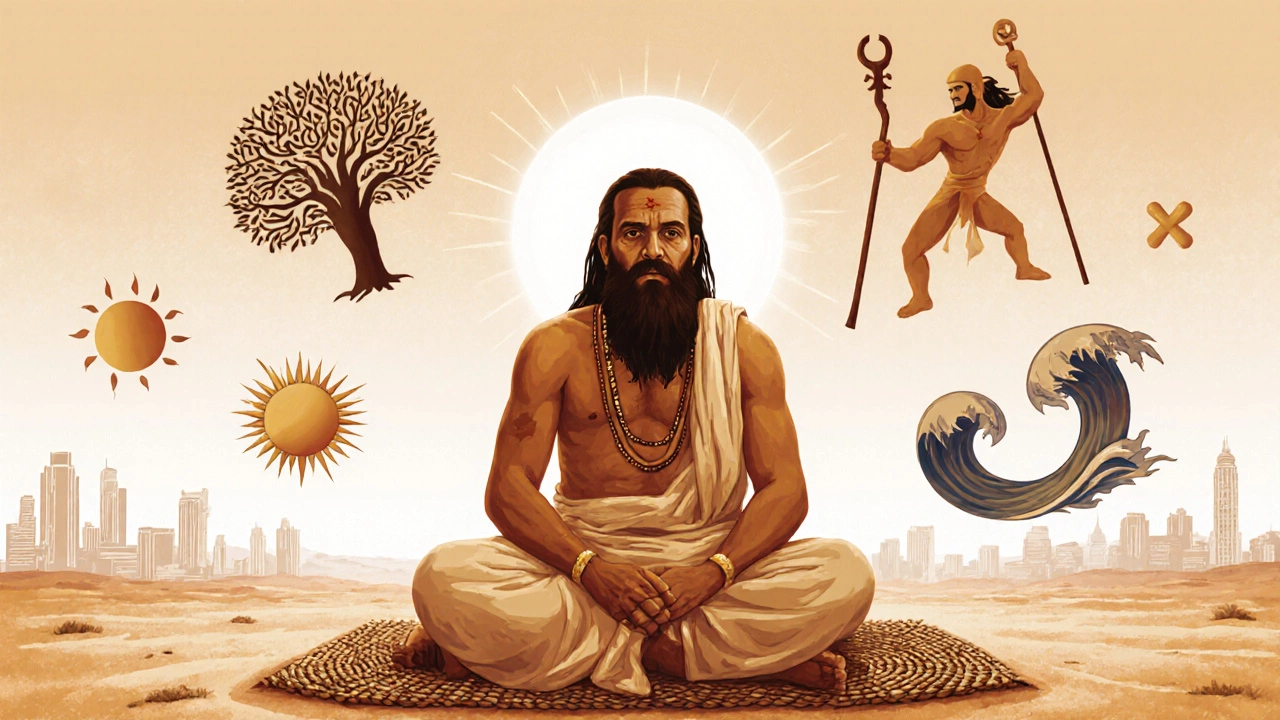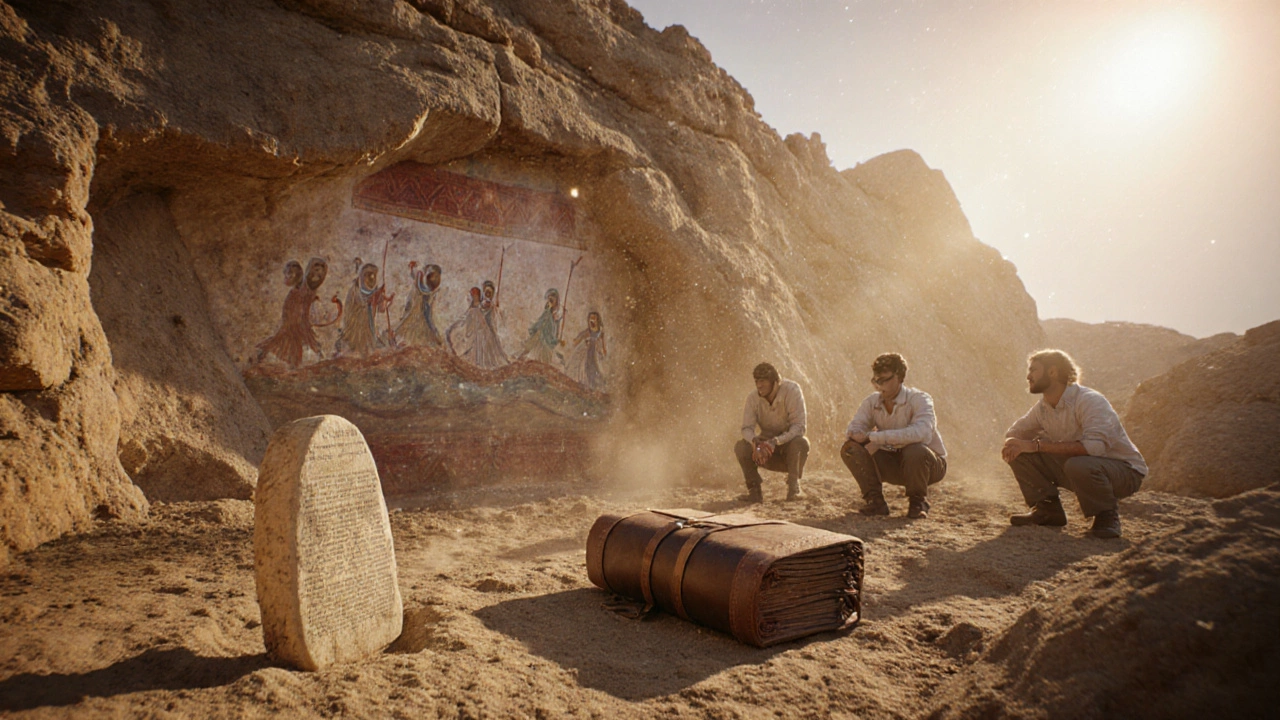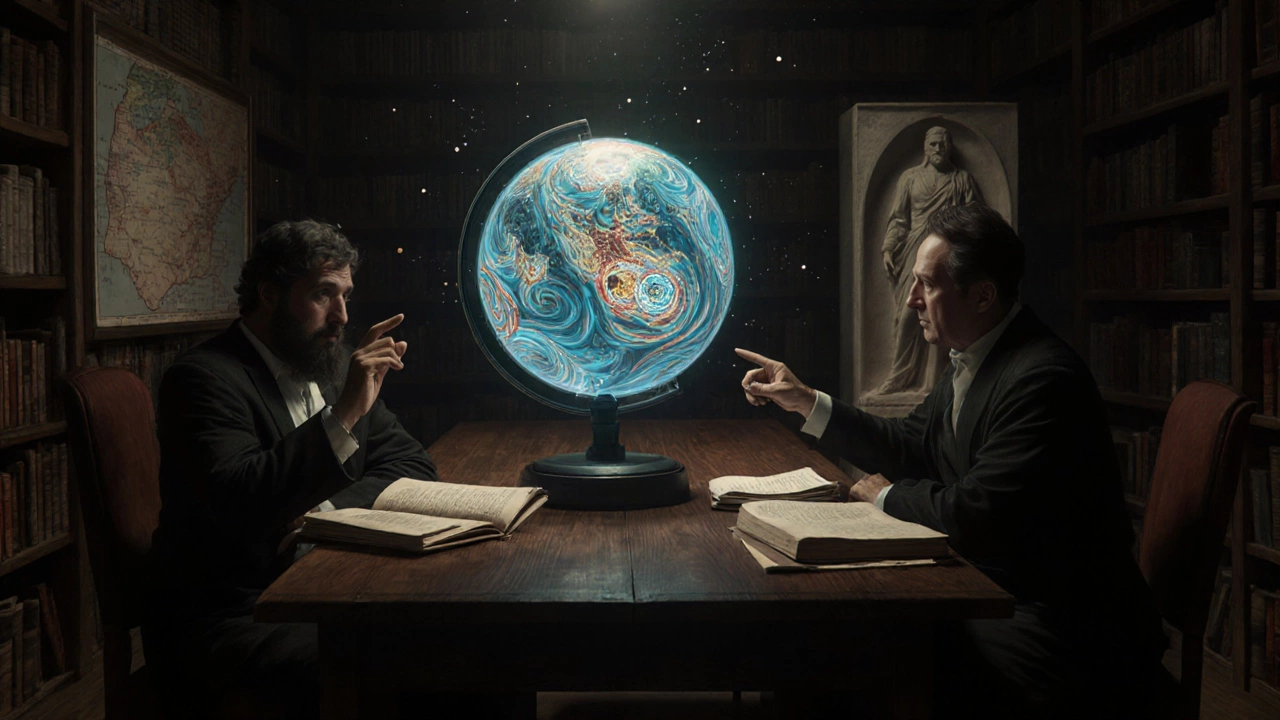
Bible Myth vs. History Explorer
Analysis Result
When people ask, "Is the Bible a myth?", the conversation instantly jumps from ancient stories to modern headlines about archaeology, theology, and pop culture. No matter where you stand-skeptic, believer, or just curious-understanding what "myth" actually means and how it applies to the Bible myth debate is the first step toward an informed opinion.
What does "myth" really mean?
In everyday speech, "myth" often gets tossed around as a synonym for "lie" or "fiction." In academic circles, however, a myth is a myth a traditional narrative that explains a culture’s worldview, values, and origins. Myths can be symbolic, contain supernatural elements, and serve a purpose beyond mere record‑keeping. They aren't automatically false; they function like a cultural lens.
The Bible the collection of sacred texts for Judaism and Christianity, composed over a thousand‑year span - history book or mythic anthology?
Think of the Bible as a library rather than a single novel. It houses law codes, poetry, prophecy, and narrative. Some books, like the genealogies in Genesis, read like mythic family trees, while others, such as the letters of Paul, are more like personal correspondence. The key question is whether the stories convey literal history, mythic truth, or a blend of both.

Archaeology meets ancient scripture
Excavations in the ancient Near East the region encompassing modern‑day Israel, Jordan, Egypt, and surrounding areas have unearthed artifacts that both support and challenge biblical narratives. For example, the discovery of the Dead Sea Scrolls a collection of Jewish texts from the second‑century BCE, including the oldest known biblical manuscripts confirmed that many verses existed in forms very close to what we read today. On the flip side, the famed “exodus” from Egypt leaves little archaeological trace beyond a handful of Egyptian records mentioning a “Hebrew” population-far short of the massive army crossing the Red Sea described in Exodus.
Scholars weigh in: mythic view vs. literal view
Two prominent voices illustrate the spectrum of opinion. Bart Ehrman a New Testament scholar who argues that the Bible contains many mythic elements and that early Christianity was far more diverse than the canonical texts suggest emphasizes the oral tradition and the way stories evolve-"myth" in his usage points to narrative structures that shape belief rather than outright falsehoods. On the opposite side, John Walton an Old Testament scholar who reads Genesis as an ancient cosmology, not a scientific account, but still treats its themes as historically grounded for its original audience argues that the Bible’s core events are anchored in real places and peoples, even if the details are mythologically embellished.
Common misconceptions about the "myth" label
- Myth ≠ fake: A myth can convey truth about a community’s values, even if the events didn’t happen exactly as told.
- All myths are ancient: Modern stories like superhero comics also function as myths, offering cultural archetypes.
- The Bible is either wholly true or wholly fictional: Most scholars see it as a mosaic of history, poetry, and mythic storytelling.
- Archaeology can prove every biblical claim: The material record is fragmentary; absence of evidence isn’t evidence of absence.

How to explore the question yourself
Start with a balanced reading list. Mix a textbook on Near‑Eastern archaeology, a popular‑science take on biblical history, and a work‑in‑progress by a scholar from each side of the debate. Keep a notebook to track which passages feel more mythic (e.g., flood narratives) and which line up with external data (e.g., mentions of Assyrian kings).
Mythic Elements vs. Historical Evidence
| Aspect | Mythic Element | Historical Evidence |
|---|---|---|
| Creation account | Genesis 1‑2 frames origins in symbolic language, with six days representing order. | Scientific data (geology, cosmology) points to a universe billions of years old, unrelated to the text. |
| Flood narrative | Global flood resembling mythic motifs found in Mesopotamian Epic of Gilgamesh. | Local flood deposits in ancient Mesopotamia suggest a regional disaster, not worldwide. |
| Exodus | Divine plagues, parting of the Red Sea, and wandering 40 years. | Egyptian records mention Semitic peoples; limited archaeological signs of a mass migration. |
| King David | Heroic warrior‑king who unites Israel. | TelDan Stele (9thc.BCE) mentions "House of David," giving a historic anchor. |
| Resurrection accounts | Multiple gospel narratives of bodily rise. | Historical method cannot verify supernatural events; scholars analyze them as faith proclamations. |
FAQs
What defines a story as a myth?
A myth is a traditional tale that explains a culture’s worldview, often featuring gods, heroes, or supernatural events, and serves to convey moral or cosmological ideas rather than literal history.
Does calling the Bible a myth mean it’s false?
Not at all. "Myth" describes a narrative style. Many biblical passages contain mythic symbolism while still being rooted in real historical settings.
What archaeological finds support biblical events?
Key finds include the Dead Sea Scrolls (early biblical manuscripts), the TelDan Stele referencing King David’s dynasty, and settlements like Jericho that match some descriptions of ancient cities.
Why do some scholars label parts of the Bible as myth?
They point to narrative patterns common in ancient Near‑Eastern myths-such as flood stories, creation accounts, and divine interventions-indicating that the biblical writers used familiar literary forms to communicate deeper truths.
How can I study the Bible’s historicity without bias?
Read both critical scholarship (e.g., works by Bart Ehrman) and conservative perspectives (e.g., John Walton). Pair textual study with archaeological reports and keep a journal noting where evidence aligns or diverges from the narrative.


